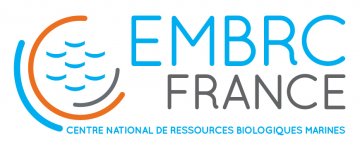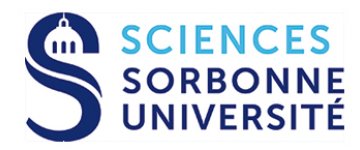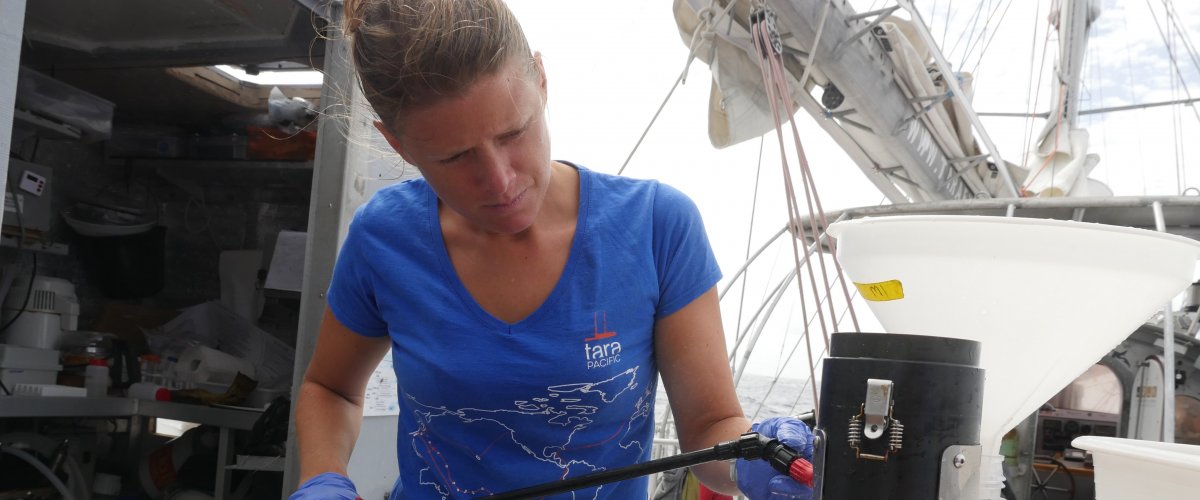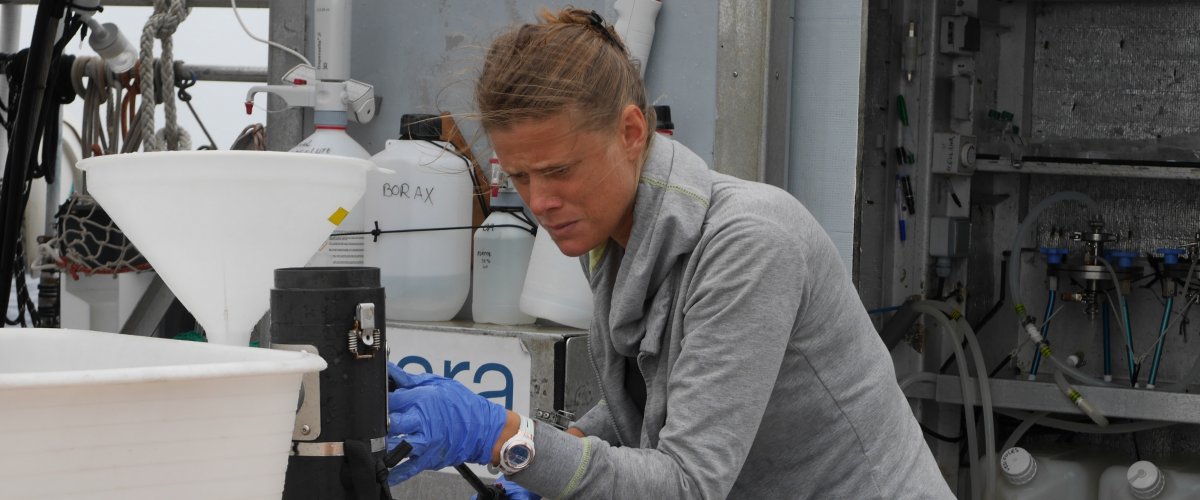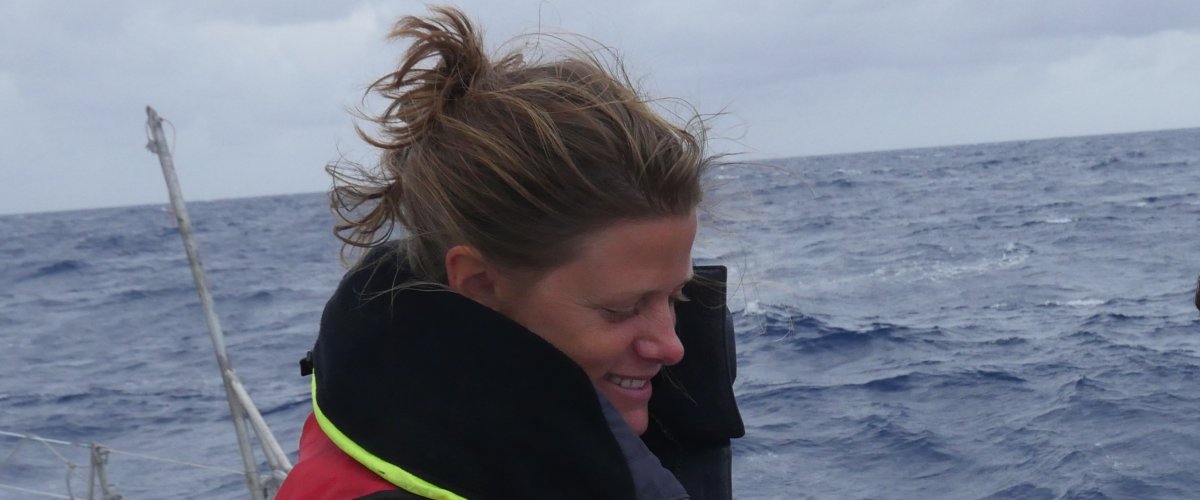Morgane Ratin
Ingénieur(e) d'études
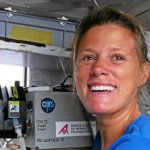
Ingénieur en biologie moléculaire et génétique microbienne
Missions
- Responsable de la coordination des activités de biologie moléculaire, management des cultures et des activités expérimentales et déploiement d’approches de mutagénèse appliqués aux cyanobactéries marines au sein de l’équipe « Ecologie du Plancton Marin » de l’UMR7144
- Agent de prévention de l’UMR7144
Expérience
PROJETS
- CINNAMON 2018-2020
Oceans are strongly affected by global change, which notably causes an increase in seawater temperature and an expansion of iron (Fe)-poor areas, whilst Fe depletion is already impairing phytoplankton growth in as much as 35 % of the global ocean. This raises the questions of the capacity of local marine phytoplanktonic populations to adapt to these harsh conditions and of the consequences of Fe depletion on the ocean ability to sequester CO2 via the biological carbon pump. The discovery of genetically distinct populations of the marine cyanobacteria Synechococcus in +Fe vs. -Fe regions as well as high vs low temperature, constitutes a unique opportunity to unveil the effects of global change on phytoplankton.
The CINNAMON project will use a cross-scale approach to i) validate the occurrence of distinct Fe and/or temperature ecotypes within Synechococcus, notably by delineating the growth optima and boundary limits for Fe and temperature of representative strains, ii) decipher the genetic basis of their specific adaptability to changes in temperature and Fe availability using the numerous genomes available as well as transcriptomes generated in response to +Fe/-Fe, and iii) validate at the population level the observations made on representative strains, but also to identify additional genes and biosynthetic pathways potentially responsible for the capacity of these ecotypes to adapt to cold or warm, low-Fe regions of the world ocean using meta-omics data from major global ocean surveys covering a wide range of oceanic regimes (Tara Oceans, Tara Polar Circle, Tara Pacific and Malaspina expeditions). Results from CINNAMON will thus be of both evolutionary and ecological interest as they should allow us to better understand i) how iron availability has driven genetic diversification within picocyanobacteria, but also ii) the consequences of this diversification on the community composition and dynamics of these key organisms, in the context of global change.
The project involves the Roscoff MaPP team (L Garczarek, U. Guyet, D. Marie, F. Partensky, M. Ratin, C. Six), the LOMIC group from the Banyuls observatory (S. Blain, F.Y. Bouget, A. Guéneuguès, J.C. Lozano, P. Schatt), the COMBI group from the University of Nantes (S. Chaffron, D. Eveillard, U. Guyet, J. Haguait), the DYLISS team (A. Siegel) from the University of Rennes as well as the Roscoff ABIMS platform (E. Corre, M. Hoebeke, G. Le Corguillé).
http://www.sb-roscoff.fr/en/project-cinnamon.
- ASSEMBLE Plus : 2018-2022 : http://www.assembleplus.eu
- SAMOSA : 2014-2018
Oceans are particularly affected by global change, which can cause e.g. increases in average sea temperature and in UV radiation fluxes onto ocean surface or a shrinkage of nutrient-rich areas. This raises the question of the capacity of marine photosynthetic microorganisms to cope with these environmental changes both at short term (physiological plasticity) and long term (e.g. gene alterations or acquisitions causing changes in fitness in a specific niche). Synechococcus cyanobacteria are among the most pertinent biological models to tackle this question, because of their ubiquity and wide abundance in the field, which allows them to be studied at all levels of organization from genes to the global ocean. In SAMOSA, we planed to develop a systems biology approach to characterize and model the main acclimation (i.e., physiological) and adaptation (i.e. evolutionary) mechanisms involved in the differential responses of Synechococcus clades/ecotypes to environmental fluctuations, with the goal to better predict their respective adaptability, and hence dynamics and distribution, in the context of global change.
The project associate the Roscoff MaPP team (L Garczarek, C. Six, F. Partensky), the COMBI GROUP from the University of Nantes (Damien Eveillard), the DYLISS team (Anne Siegel) from the University of Rennes and the Roscoff ABIMS platforme (E. Corre, G. Le Corguillé, M. Hoebeke).
- MICROB3 2010-2015 : Analyse de la composition des communautés de cyanobactéries à partir de données de metabarcoding et/ou metagénomique.
- METASYN 2009-2014 : Séquençage de 32 nouveaux génomes de Synechococcus sp.
- PELICAN 2009-2013 : Influence de la pigmentation sur la distribution des Synechococcus marins.
CURSUS UNIVERSITAIRE
2004-2005 Master2 de Génétique et Gestion de la Biodiversité, Université Pierre et Marie Curie, Paris (75)
2001-2004 DUP Génie Biologique, option Production Végétale, Université de Rennes I (35).
1999-2001 DUT Génie Biologique, option Analyses Biologiques et Biochimiques, IUT Quimper (29).
EXPERIENCES PROFESSIONNELLES
Depuis 2009 UMR 7144 CNRS, « Ecologie du Plancton Marin » de l’UMR7144, Station biologique de Roscoff.
2008-2009 UFR de Médecine, Groupe Gliome Brestois (J.L. Carré et B. Simon), Université Bretagne Occidentale, Brest.
Mise en culture et caractérisation de cellules de Glioblastome. Recherche de marqueurs cellulaires. Test de prolifération cellulaire en présence de candidats-médicaments potentiels.
2006-2008 USR 3151 CNRS, Equipe Phosphorylation de Protéines et Maladies Humaines (L. Meijer), Station Biologique de Roscoff.
Etude de l’activité de la glycogène synthase kinase-3 chez Plasmodium falciparum, agent responsable du paludisme. Criblage d’une collection de composés naturels marins et dérivés. Etude de molécules d’intérêt chez le parasite en culture.
2005 UMR 7139 CNRS-UPMC, Equipe Génétique des Algues (M. Cock et B. Charrier), Station Biologique de Roscoff.
Analyse génétique du développement multicellulaire chez l’algue brune Ectocarpus siliculosus, qui présente au cours de son cycle une alternance de deux phases morphologiquement différentes. Recherche des gènes sporophytes- et gametophytes-spécifiques par la technique de puce à ADN. Comparaison mutant sporophytique/sauvage.
2004 Equipe de Biologie Moléculaire (S. Boury), Bretagne Biotechnologies Végétales, Saint Pol de Léon.
Recherche de marqueurs génétiques pour détecter la présence de Peronospora parasitica, agent responsable du mildiou du chou-fleur, par amplification des séquences ITS des ARNm / Etude phylogénétique entre différents isolats de P. parasitica collectés dans différentes régions.
2001 Equipe Invertébrés marins, Laboratoire Evolution Moléculaire et Adaptation (A. Van Wormhoudt), MNHN, Station de Biologie Marine de Concarneau.
Etude de l’a-amylase de l’huître Crassostrea gigas. Synthèse et purification d’une protéine recombinante, à partir d’ARN extraits de différents tissus.
Publications
Oral communications
Optimisation of mutagenesis in marin picocyanobacteria Synechococcus. Ratin M, Grébert, Partensky F, Kehoe D, Garkzarek L, Assemble JRA3 workshop, Naples 2018.
Thermoregulation of membrane lipid composition in picocyanobacteria : Towards an understanding of adaptation to thermal niches. Breton S, Jouhet J, Pittera J, Doré H, Garkzarek L, Ratin M, Nguyen NA, Partensky F, Marechal E, Six C. 10th European Workshop on Molecular Biology of Cyanobacteria, Cluj-Napoca, Romania 2017.
Publications
A novel species of the marine cyanobacterium Acaryochloris with a unique pigment content and lifestyle. Partensky F, Six C, Ratin M, Garczarek L, Vaulot D, Probert I, Calteau A, Gourvil P, Marie D, Grébert T, Bouchier C, Le Panse S, Gachenot M, Rodríguez F, Garrido JL. Sci Rep. 2018 Jun 14;8(1):9142. doi: 10.1038/s41598-018-27542-7.
Relative stability of ploidy in a marine Synechococcus across various growth conditions.
Perez-Sepulveda B, Pitt F, N'Guyen AN, Ratin M, Garczarek L, Millard A, Scanlan DJ. Environ Microbiol Rep. 2018 Aug;10(4):428-432. doi: 10.1111/1758-2229.12614.
Thermoacclimation and genome adaptation of the membrane lipidome in marine Synechococcus.
Pittera J, Jouhet J, Breton S, Garczarek L, Partensky F, Maréchal É, Nguyen NA, Doré H, Ratin M, Pitt FD, Scanlan DJ, Six C. Environ Microbiol. 2018 Feb;20(2):612-631. doi: 10.1111/1462-2920.13985
Delineating ecologically significant taxonomic units from global patterns of marine picocyanobacteria. Farrant GK, Doré H, Cornejo-Castillo FM, Partensky F, Ratin M, Ostrowski M, Pitt FD, Wincker P, Scanlan DJ, Iudicone D, Acinas SG, Garczarek L. Proc Natl Acad Sci U S A. 2016 Jun 14;113(24):E3365-74. doi: 10.1073/pnas.1524865113.
A gene island with two possible configurations is involved in chromatic acclimation in marine Synechococcus. Humily F, Partensky F, Six C, Farrant GK, Ratin M, Marie D, Garczarek L.
PLoS One. 2013 Dec 31;8(12):e84459. doi: 10.1371/journal.pone.0084459.
